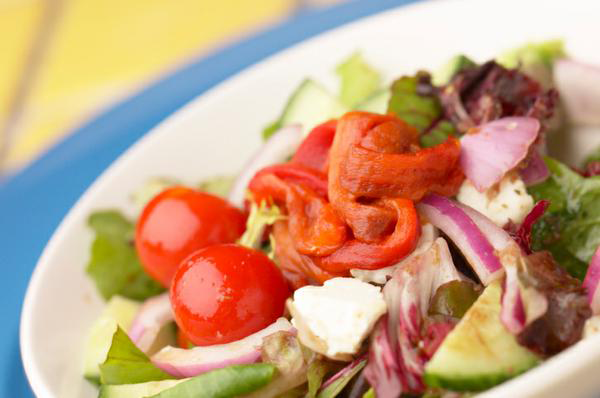Lower Blood Pressure with a Low Carb Diet
Let me state right up front that I do not recommend following a low carb diet. That being said I want to share some of the latest research with you.
A study published on January 25, 2010 in the Archives of Internal Medicine compared a low carb diet versus a low fat plus orlistat diet. Researchers analyzed the effect of these two diets on weight loss and blood pressure.
Just in case you don’t know, orlistat is also known by the names Xenical and Alli.
Researchers studied 146 participants from the Department of Veterans Affairs primary care clinics in Durham, North Carolina. Participants were randomly assigned to either the low carb of the low fat plus orlistat diet, received instructions, and were monitored for 48 weeks. Some factors analyzed included body weight, blood pressure, fasting serum lipid, and glycemic parameters.
Results of the study found weight loss to be similar between the two groups at ~9% body weight. The low carbohydrate diet resulted in a lower blood pressure for participants when compared to the low fat diet with orlistat. The low carb diet lowered systolic (top number) blood pressure on average 5.9 mm Hg and diastolic (bottom number) blood pressure 4.5 mm Hg.
HDL Cholesterol and triglyceride levels improved for individuals on each diet, while LDL cholesterol improved only for those on the low fat plus orlistat diet. Glycemic parameters, such as glucose, insulin, and hemoglobin A1C only improved for low carbohydrate diet participants. Although it’s worth noting that the difference between groups was not statistically significant.
Like I said at the beginning I do not recommend a low carb diet. My first choice to promote a lower blood pressure would be the DASH diet. A study on the DASH diet was actually published in this same journal issue.
The DASH Diet alone was compared to the DASH diet in combination with a weight management and exercise plan. The DASH Diet when combined with an exercise/weight management plan resulted in an 11.2 mm Hg drop of systolic blood pressure and an average weight loss of 19 pounds over a 4 month period.
The main thing to remember is that you need to pick a plan you can stick with for the long term. Steady, consistent action is what will lead to results. If you haven’t already I encourage you to sign-up for the e-course 7 Natural Ways to Lower Blood Pressure at http://www.lowerbloodpressurewithlisa.com.
What do you think about using a low carb diet to lower blood pressure? Share your thoughts below.
All the best,
Lisa Nelson RD
Lower Cholesterol and Blood Pressure – Are you ready?
How long have you been struggling to lower cholesterol and/or blood pressure? 12 months? 3 years? More than 10 years?
Are you ready to stop struggling and start getting results?
Over the years I’ve worked with clients to improve heart health it’s become very clear that those who receive long-term support see much greater levels of success which is why I want to get this option available to you. It’s going to be comprehensive and customized to your needs to ensure your success.
Some of the specifics include:
Detailed Diet Assessment
You will receive a detailed evaluation of your dietary intake to specifically analyze your calorie and nutrient intake to determine what foods need to be increased, what foods need to be eliminated (or reduced) and what needs to be added so you are on track.
Expert Feedback
You will receive expert feedback and guidance from a heart health nutrition specialist to guide you in the right direction, help you overcome obstacles, and support you on your heart health journey.
Specific examples for your situation
This program doesn’t include general feedback regarding diets to lower cholesterol and blood pressure. This will be completely customized and based on your current diet and lifestyle habits to determine what YOU need to do. You will receive specific examples and suggestions on how you can meet your calorie, nutrient, and activity goals.
Direct Email Access to Ask Questions
Making diet and lifestyle changes is not a “cookie cutter” process. There will be ups and downs. You will have questions. This program allows you to directly submit your questions and receive answers without going through a “middle man”.
Track Your Progress
You will check-in at the start of every month to assess your progress and determine strategies and goals for the month ahead. This will include a goal checklist to make sure you stay on track.
Delicious Heart Healthy Recipes
Every week you’ll receive a new heart healthy recipe delivered directly to your email inbox. By then end of the program you’ll have added 24 new heart healthy choices to your meal plan.
Take Action Plan for Heart Health Success
This program will provide you the tools, information, guidance, and support you need to finally get on track and maintain your heart health for life. We’ll progress through several different factors including diet, lifestyle, and functional foods to meet your goals.
By the end of the 6 months (if you follow through) you’ll see. . .
Lower cholesterol levels
Reduced blood pressure
Elevated HDL cholesterol
Decreased need for medication
Increased energy
. . .and the potential for much more depending on your health goals!
Stay tuned for more details! If you want to receive priority notification (and be eligible for a special savings) sign-up for the priority notification list at http://www.hearthealthmadeeasy.com/notify.html.
All the best,
Lisa Nelson RD
Lower Blood Pressure with Whole Grains
The long running Health Professional Follow-Up Study has released new findings. The study found men who eat a high level of whole grains to be 19% less likely to develop high blood pressure compared to those eating the lowest levels of whole grains. The individuals with lower risks of developing high blood pressure consumed 52 grams of whole grains daily versus only 3 grams in the lower whole grain group.
Even though this study focused on men, similar results are being seen for women in the Women’s Health Study.
A few possible reasons increasing your intake of whole grains may prevent high blood pressure include better insulin sensitivity, lower blood sugar, decreased food intake to higher feelings of satiety (fullness).
Current whole grain recommendations are 85 grams per day.
How many grams of whole grains do you think you consume each? Do you have ideas for how you can increase your intake?
All the best,
Lisa Nelson RD
7 Natural Ways to Lower Blood Pressure
http://www.lowerbloodpressurewithlisa.com
Lower Cholesterol and Blood Pressure Now with Take Action Guide – American Heart Month
 Every February marks American Heart Month. Heart disease is the number on killer of Americans with cardiovascular disease and stroke taking nearly 1 million lives every year. Heart disease is strongly affected by your diet and lifestyle choices. By making some simple, but necessary changes you can drastically decrease your risk by lowering cholesterol and blood pressure.
Every February marks American Heart Month. Heart disease is the number on killer of Americans with cardiovascular disease and stroke taking nearly 1 million lives every year. Heart disease is strongly affected by your diet and lifestyle choices. By making some simple, but necessary changes you can drastically decrease your risk by lowering cholesterol and blood pressure.
Heart Health Made Easy: Master the Basics to Lower Blood Pressure and Cholesterol for a Longer, Healthier Life – American Heart Month Savings
Purchase Heart Health Made Easy before February 28th and you’ll receive a 25% savings
The program takes you step-by-step to a lower cholesterol and blood pressure with a practical, easy to understand take action guide.
THIS PROGRAM IS RIGHT FOR YOU IF. . .
- You are newly diagnosed with high cholesterol and/or blood pressure and don’t know the next step.
- You want to promote heart health, prevent high cholesterol, high blood pressure, and heart disease.
- You want all the information they need to know in one location.
- You don’t want to search for the answers yourself, but want the information you need easily and quickly accessible.
Learn more at http://hearthealthmadeeasy.com
All the best,
Lisa Nelson RD
Why is Heart Disease Overlooked in Women?
Did you know heart disease kills a woman nearly every minute in the U.S.?
If heart disease is responsible for so many female deaths why is it still being overlooked not only by women themselves, but by their physicians as well? Heart disease is not only the number one killer of men, but it’s also the number one killer of women.
Here are a few scary statistic:
- 64% of women who diet from heart disease have no previous symptoms
- 1 in 2.6 deaths in women is due to heart disease versus 1 in 30 from breast cancer
- Heart disease kills about half a million women every year
Don’t underestimate your risk for heart disease and the importance of maintaining healthy cholesterol levels. The foods you eat and your level of physical activity both play a role in your heart health.
Be sure to sign-up for the free e-course How to Lower Cholesterol in 8 Simple Steps.
All the best,
Lisa Nelson RD
Heart Healthy Eating – 7 Salad Bar Mistakes to Avoid
 When trying to be heart healthy and lose weight a salad can be a great choice to include as a regular part of your meal plan – either as a vegetable side or the main entrée.
When trying to be heart healthy and lose weight a salad can be a great choice to include as a regular part of your meal plan – either as a vegetable side or the main entrée.
However, a salad can quickly become a weight loss disaster if you make the 7 mistakes below!
Mistake #1 – Selecting iceberg lettuce.
Iceberg lettuce is one of the most common forms of lettuce you’ll find in grocery stores and salad bars. Unfortunately iceberg lettuce provides minimal nutrients (mostly crunchy water). Select dark green, leafy lettuce varieties, such as romaine and endive. Also, greens like spinach and arugula provide added nutrients to your salad mix.
Mistake #2 – Skimping on fresh vegetables.
You can afford to splurge on fresh vegetables, such as broccoli, carrots, cabbage, peppers, cucumbers, tomatoes, and mushrooms. Fresh vegetables are low in calories and rich in vitamins and minerals.
Mistake #3 – Skipping the protein.
If your salad is your entrée it’s important to add some protein, such as chopped eggs, nuts and seeds, beans, or shredded meat (turkey/ham/chicken/seafood). Refer to How Much Protein Do You Need to Lose Weight? for a review of your protein needs.
Mistake #4 – Choosing a cream based soup.
Soup is often included on salad bars. Cream based soups tend to be high in calories and fat. Opt for broth based soups instead.
Mistake #5 – Loading up on salad toppings
Croutons, sesame noodles, and bacon bits are a few common salad toppings. These topping should be used sparingly. They provide minimal nutrients and are high in calories.
Mistake #6 – Selecting a high fat, high calorie salad dressing.
Now, if you’ve avoided the first five mistakes, you don’t want to ruin your nutritious salad with a poor dressing choice. Opt for vinegar based salad dressings or low fat/calorie salad dressing if available and use sparingly. Tip: Dip your fork in a small cup of salad dressing before every bite instead of pouring the dressing on your salad. You get great flavor with every bite and use significantly less dressing.
Mistake #7 – Making too many trips to the salad bar.
Even if your salad bar includes unlimited trips it’s not necessary to go back multiple times – which can be very tempting. Decide in advance how many trips you’ll make and stick with your plan. Even though a well-balanced salad is a healthy choice, too much of a good thing can quickly turn bad!
All the best,
Lisa Nelson RD



